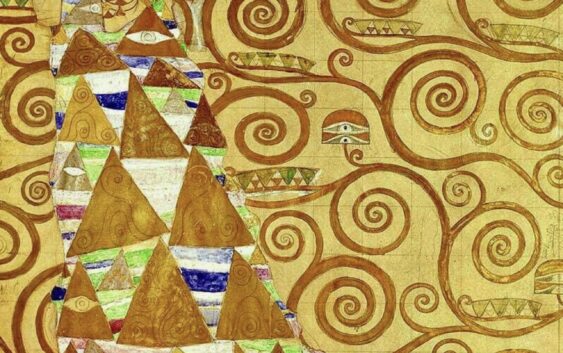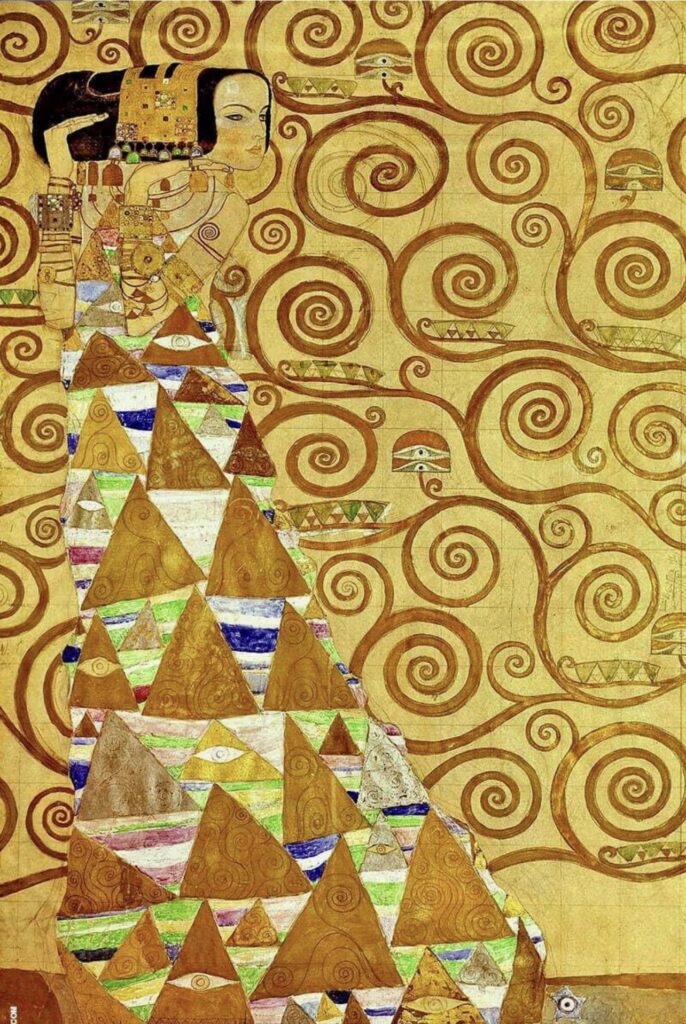GUSTAV KLIMT’S “EXPECTATION”

The oil on canvas painting, Expectation Stoclet Frieze, illustrates artist Gustav Klimt’s gold phase as he incorporates flourishing tones of gold and bronze to accentuate his Egyptian inspired painting.
The artist had co-partnered with his colleagues Adolphe Stoclet and Josef Hoffmann to create the masterpiece.
An arrangement of patterns are strategically placed throughout the artwork, shades in colours of gold to transcend the piece. Klimt had traced his drawing to marble plate, and then had them carved by prominent team of craftsmen, which included gliders, marble workers and enamellers.

These individuals collaborated on the artwork, assembling the mosaic art piece in a critical blueprint planed. Klimt had led the team through detailed instructions of the types of materials, stones and textures that were to be used to illustrate an art piece of the gold phase.
The Egyptian art piece illustrates a woman with her profile turned to the side, as she holds her hands in a structured position. The woman carries dark features throughout her hair, transcending into her dark eyebrows arched. The woman has a glimpse of purple soaring out of her eyes, outlined by a black cat eye eye-linear. The woman’s skin is covered in henna styled tattoo on the skin in a light brown as the traditional work at the time. The woman’s tattoo swirls on the top of her arm, and continues across her neck.
Both of the arms of the woman are covered in gold and bronze bracelets, with a gold textured armband across the woman’s arm. The metallic coloured jewellery continues throughout the arms of the woman, encompassing small stones throughout the bracelets. Rings hang off of the woman’s fingers, as small bells in a light gold colour. The dark haired muse is topped with a bronze headpiece with small details covering the texture of the piece in a checked pattern.
Small black squares fill the headpiece in a detail-oriented technique, paying attention to even the smallest pattern. Off the bottom oft the headpiece, dangle nine gemmed stones. These blue and green art pieces seize the attention of the viewer as they add a glimpse of bold colours to the classic bronze and gold piece.
The Egyptian woman is dressed in a triangular dress, made up of a pattern of small triangles within. The upper triangles within the dress maintain a classic gold colour, with pops of blue and pink, then transform to marble coloured triangles paired with bronze triangles that swirl on the inside. This strategic pattern flourished towards the floor of the art piece, creating a modern silhouette while encompassing the art nouveau style.
The background of the painting is an array of swirling bronze branches in a coordinated pattern. Symbolism is evident through the background, as the Egyptian eye is illustrated throughout the lines. The eye of Horus symbolizes protection, royal power and good health, adding to the history of the piece.
The transformational New Art the Gustav Klimt explored with gold colours mosaic patters seized his colleges. Klimt took control of the formation of the piece, illustrating how to achieve the beautiful artwork his pieces were based on. Klimt’s classic style hold a significant cornerstone in art history, as the work is still used today and inspired the phase into art deco.

